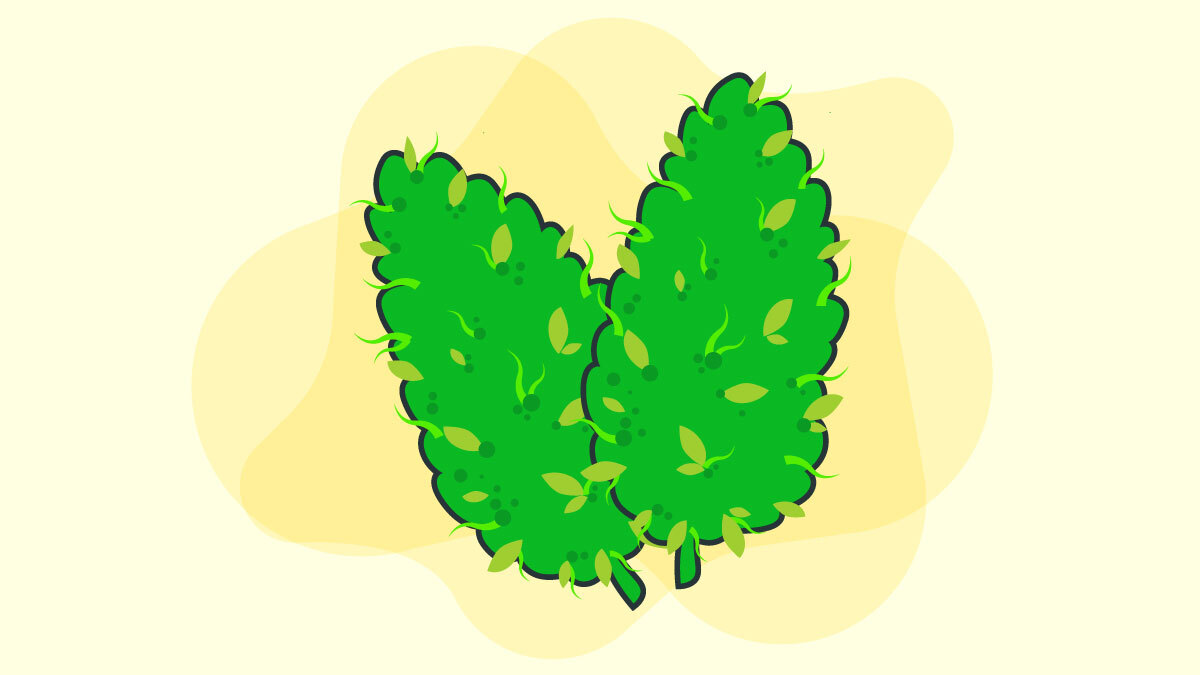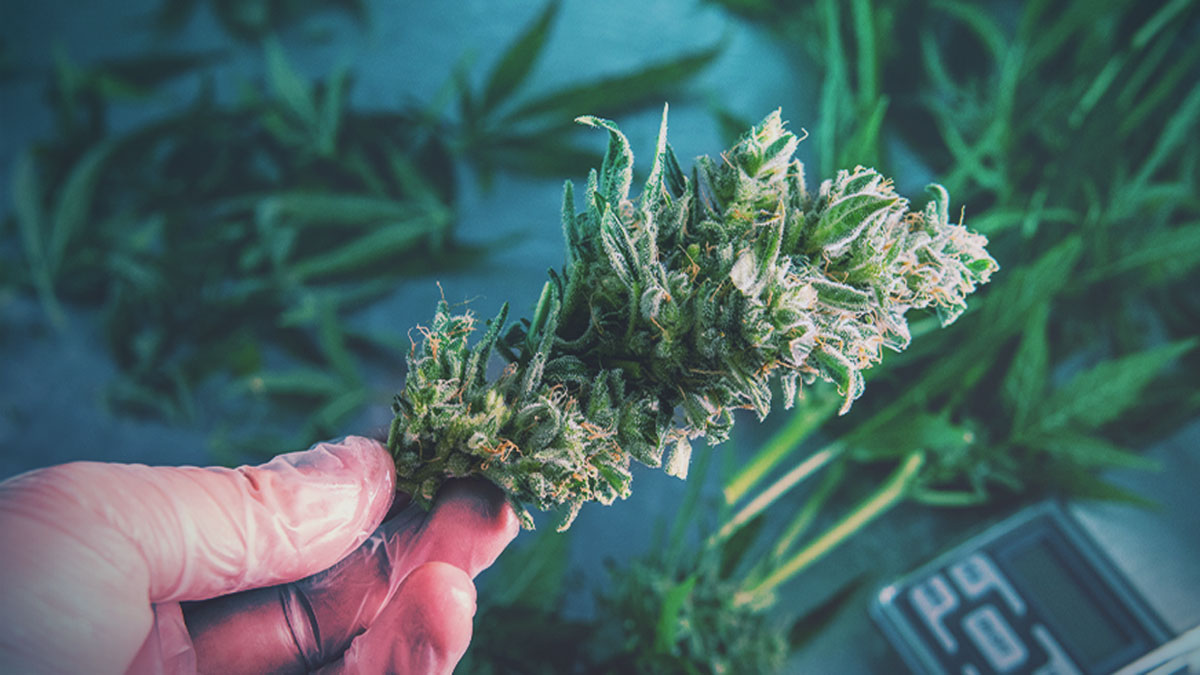Exotic Weed: What Makes These Strains Unique?

It isn’t unusual to see a Lamborghini cruising around Beverly Hills, but it would certainly be considered an exotic car in Youngstown, Ohio.
So what does “exotic” weed mean?
At its best, the term is used to describe a very high-potency cannabis strain that’s enticing, exciting, and rare.
At its worst, it’s a marketing term dealers use to sell unfamiliar strains when they have no clue about the strain’s background or genetics.
Here’s what you should know when you’re offered exotic weed at a ridiculously high price.
The Meaning of Exotic
Dictionary.com defines “exotic” as “of foreign nature or character, not native; strikingly unusual or strange in effect or appearance; of a uniquely new or experimental nature.”[1]
That supports the common meaning of the term when it comes to cannabis. In short, it’s the top-shelf weed that is way out of the ordinary. You’ll never hear people calling strains like GSC, Sour Diesel, or OG Kush exotic; everyone knows them, even if they haven’t tried them.
“Non-native,” “unusual” or “uniquely new” strains are the ones that qualify as exotic — at least to weed connoisseurs. That’s why a strain that’s easy to find on the West Coast may be considered “exotic” back east.
Not every dealer is so precise with terminology, though. If they’ve gotten their hands on some stuff that packs a serious punch and is better than most of the bud commonly available, they may simply throw the term “exotic” at it. In many cases — and if they’re a good salesman — the term may earn them double their normal price.
It’s not clear exactly where the street term “exotic weed” originated, but Leafly says it may have come from hip-hop culture. That would make sense.
Lyrics.com says there are nearly 8,000 songs with the word exotic in the lyrics, but every one of the best matches is a rap song. And a synonym for exotic weed, “Zaza,” is commonly used in rap as a shorter way to say “exotic.”[2]
Why is only high-end weed considered exotic? The only apparent explanation is common sense: no one would get excited over rare or unusual flower unless it was extremely potent.
That usually involves genetics.
Creating an Exotic Weed Strain

It’s been more than 25 years since California started the legalization trend by approving medical marijuana, and more than 10 years since Washington and Colorado were the first states to legalize recreational weed use.[3]
Needless to say, that’s been a godsend for cannabis growers. Not only are they able to raise their crops without fear of legal action against them, but they’ve been able to freely breed hybrids to maximize potency and other desirable characteristics.
Girl Scout Cookies were bred in the San Francisco Bay Area by reportedly crossing Durban Poison and OG Kush. Granddaddy Purple was a cross of Big Bud and Purple Urkle. There are hundreds of similar stories.
Selective breeding is credited with increasing marijuana’s average THC content since legalization began. It was about 4% in 1995, and 12% about twenty years later. Strains with more than 30% THC content are now regularly created, and it’s easy to find 20-25% THC weed at dispensaries.[4]
Those advances are also responsible for the many exotic strains that have hit the market in recent years. Breeders like Exotix Genetix (Grease Monkey, Cookies and Cream), Seed Junky Genetics (Wedding Cake, Ice Cream Cake) and Compounds Genetics (White Runtz, Apples & Bananas) specialize in creating new top-shelf weed strains that are both potent and unusual.
Exotic strains will usually have THC content in the mid-20% range, or even higher. But you can tell from their names that most of these strains are bred for head and body effects, taste, and aroma as much as their potency. Great exotic weed won’t just get you blasted out of your mind; it will be an experience to remember.
There’s another aspect to creating exotic weed, though: publicity. Word of mouth is just as important as the quality of the bud, and most breeders (and vendors) do all they can to generate social media buzz for their strains. A catchy name certainly helps, too.
One clarification: exotic strains don’t have to be hybrids created by innovative growers. Pinkman Goo, for example, is a rare, striking pink-and-purple strain that produces incredible amounts of strong resin (the “goo”). And it was bred from seeds found behind a refrigerator.
Terrific exotic weed strains may be Sativa- or Indica-dominant, their highs may be euphoric or sedating, they may be skunky or they may be sweet. They’ll have four things in common, though. They’re potent, they’re buzz-worthy, they provide an experience (the type of high, the taste, the aroma) that’s new to most users — and they’re more expensive than ordinary strains.
Need a few suggestions?
3 Most Exotic Weed Strains
By the time you read this article, these exotic weed strains may already be yesterday’s news. On the other hand, they’re so good that they may still be considered the cream of the crop.
1. Snowcap:
In the low-to-mid 20% THC range, snowcap looks odd (not a bad thing for exotic strains), with the buds nearly obscured by brown hairs. It’s a cerebral and uplifting 50/50 hybrid that has a distinct and terrific menthol flavor.
2. Animal Face:
A cross of Animal Mints and Face Off OG, this strain is 80/20 Sativa-dominant with THC in the mid-20s, and flavors of diesel and pine. It blasts you with a euphoric initial high that morphs into a blissful, unfocused, and relaxed experience.
3. Runtz:
This exotic strain isn’t just potent (THC content in the 20s), it’s gorgeous (buds vary in color from lime green to bright purple) and delicious (tasting of sugar candy). It’s a 50-50 hybrid created by crossing Gelato and Zkittlez, and the yummy smoke delivers a powerful, uplifting high.
Exotic Weed FAQ
Q: If a strain is only available in one part of the country, does that automatically make it exotic somewhere else?
A: It depends on your definition. It would be rare and unusual in the area where it’s hard to find. But according to the way that most people use the term “exotic,” it would also have to be a strain worth seeking out because of its potency and other characteristics. Schwag is still schwag, even if it’s new to you.
Q: Is a strain like Malawi Gold considered exotic?
A: Again, it depends on definitions. This weed originated in Central Africa and isn’t easy to find in America, so it’s definitely rare. It’s also tasty and beautiful. However, its THC content in the mid-teens would convince many people that it’s not worth a premium price and not worthy of being described as exotic.
Q: If someone describes weed as exotic, does that mean it’s probably worth a try?
A: Who’s calling it exotic? If it’s a trusted stoner friend or a reliable budtender, we’d be likely to take a shot. If it’s a dealer you’ve never dealt with before, it may just be part of their sales pattern.